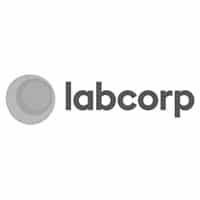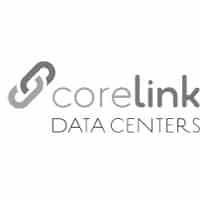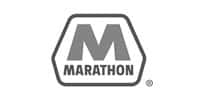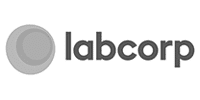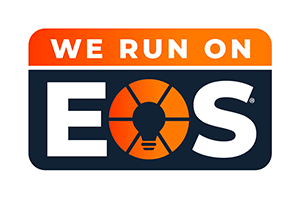The IoT Invasion of Data Centers
 Though not new, the Internet of Things, or IoT, is one of those trendy tech buzzwords that people love to throw around but often fail to fully understand. IoT is transforming life as we know it on both a micro and macro level and so, naturally, it is heavily impacting day-to-day operations of data centers due to shifting performance demands. This global shift will only increase in size and rate of expansion which means that data centers should be acting now to anticipate and adapt as needed in preparation because it will be far better to be prepared than to be trying to play catch up while your competitors stride forward, leaving you behind.
Though not new, the Internet of Things, or IoT, is one of those trendy tech buzzwords that people love to throw around but often fail to fully understand. IoT is transforming life as we know it on both a micro and macro level and so, naturally, it is heavily impacting day-to-day operations of data centers due to shifting performance demands. This global shift will only increase in size and rate of expansion which means that data centers should be acting now to anticipate and adapt as needed in preparation because it will be far better to be prepared than to be trying to play catch up while your competitors stride forward, leaving you behind.
IoT is going to be a critical component of some very exciting advances which is why it is not going anywhere. Computer World explains how we will see IoT growing in 2020 and beyond, “IoT has paved the way for smarter technologies, and will only continue to proliferate with the drive to connect absolutely everything, and the emergence of 5G networks worldwide to support that goal. Smart cities, connected cars, and other emerging technology trends fueled by IoT-enabled devices are likely to further gain pace from 2020 onwards…According to Microsoft’s study, the future of IoT is dependent on other technology such as 5G and AI, which will be critical for success in the next two years. ‘With innovation labs that were previously acting independently now more closely integrated with broader IT teams, and other stakeholders across the business engaged with the process, IoT projects will deliver concrete results for the enterprise,’ Felix Gerdes, director of digital innovation services at Insight UK said. GSMA Intelligence estimates that IoT adoption will add up to $370 billion (£281.83 billion) per annum to the global economy by 2025.‘Adoption will keep growing over the next three years as more organizations make use of scalable, easy-to-deploy, cloud-based IoT solutions such as Microsoft and BMW’s Open Manufacturing Platform,’ added Gerdes.”
With IoT firmly established, it is imperative that data center managers or operators close4ly look at their data center information management strategy (DCIM), power capabilities and capacity, storage capabilities and capacity, and more to ensure a smooth transition into the ever-dominating era of IoT.
The growing size and volume of data, along with critical uptime demands, is putting a strain on many data centers. Some of the most common solutions to this are distributed networks, edge computing, dependence on the cloud, and colocation centers. And, while these are excellent options, they naturally pose two primary problems that must be addressed and regularly monitored to succeed in an IoT era: speed and security. If you cannot provide these two things to your company, you are likely to struggle in an increasingly digital era and if you do not provide them to clients, they will look elsewhere for their data center needs.
IoT Data Center Challenge #1: Speed
 First, let us address the issue of speed for data centers in today’s modern IoT era. Anything less than fast processing speed in the IoT era is simply unacceptable in the marketplace and could mean the difference between your success or your demise. As things become more distributed and data size and volume increases, data centers are faced with the challenges associated. In the end, data can only travel so fast, over such a distance, with the added factor of size heavily influencing speed as well. Edge computing is a viable and effective solution for many data centers, regardless of size. By decreasing the distance of server placement in relationship to where data is being distributed, data transmission speed can be enhanced. Additionally, increasing bandwidth is one excellent way to reduce data center latency.
First, let us address the issue of speed for data centers in today’s modern IoT era. Anything less than fast processing speed in the IoT era is simply unacceptable in the marketplace and could mean the difference between your success or your demise. As things become more distributed and data size and volume increases, data centers are faced with the challenges associated. In the end, data can only travel so fast, over such a distance, with the added factor of size heavily influencing speed as well. Edge computing is a viable and effective solution for many data centers, regardless of size. By decreasing the distance of server placement in relationship to where data is being distributed, data transmission speed can be enhanced. Additionally, increasing bandwidth is one excellent way to reduce data center latency.
IoT Data Center Challenge #2: Security
Next, it is important to discuss security in relation to the IoT era since it is such a complex issue data centers face in adapting to IoT while security threats only get more sophisticated, unrelenting, and high-stakes for both small and large data centers.
There are many factors to consider when determining an effective DCIM strategy that includes robust and dynamic security. CSO further elaborates on the complex security issues that data centers must consider when enhancing their security to meet the demands of IoT and provides some helpful insight and suggestions for how to strategically move forward with enhanced security, “This expanding, open, and increasingly fragmented model is undermining the ability of security leaders to maintain network security while supporting growing demands for performance, reliability, and availability.  In many data centers, for example, enterprise architectures are being built on a high-performance routing and switching infrastructure that don’t include advanced security. That’s because traditional security appliances are built using off-the-shelf CPUs and hardware to process security traffic, making them an infrastructure bottleneck that results in degraded user and application experience, which are table stakes in today’s competitive digital marketplace. Instead, these environments are being protected using VLANs and Layer 4 access lists that cannot withstand most of today’s sophisticated attacks. So when the inevitable security breach occurs, hackers are able to easily move across the network, freely gaining access to credentials, resources, and data…Internal segmentation is one such solution. It can be deployed to regain control over rapidly expanding networks while improving visibility and defense. Organizations can implement internal segmentation to efficiently translate business goals into the “where,” “how,” and “what” of security segmentation. In this strategy, “Where” establishes the points of segment demarcation and the logic used to segment IT assets, “How” implements business goals with fine-grained access control and maintains it using continuous, adaptive trust, and “What” enforces access control by applying high-performance advanced (Layer 7) security across the network. Macro- and micro-segmentation architectures can also be applied, as well as application-, process-, and endpoint-level segmentation, to create smaller, more manageable attack surfaces.”
In many data centers, for example, enterprise architectures are being built on a high-performance routing and switching infrastructure that don’t include advanced security. That’s because traditional security appliances are built using off-the-shelf CPUs and hardware to process security traffic, making them an infrastructure bottleneck that results in degraded user and application experience, which are table stakes in today’s competitive digital marketplace. Instead, these environments are being protected using VLANs and Layer 4 access lists that cannot withstand most of today’s sophisticated attacks. So when the inevitable security breach occurs, hackers are able to easily move across the network, freely gaining access to credentials, resources, and data…Internal segmentation is one such solution. It can be deployed to regain control over rapidly expanding networks while improving visibility and defense. Organizations can implement internal segmentation to efficiently translate business goals into the “where,” “how,” and “what” of security segmentation. In this strategy, “Where” establishes the points of segment demarcation and the logic used to segment IT assets, “How” implements business goals with fine-grained access control and maintains it using continuous, adaptive trust, and “What” enforces access control by applying high-performance advanced (Layer 7) security across the network. Macro- and micro-segmentation architectures can also be applied, as well as application-, process-, and endpoint-level segmentation, to create smaller, more manageable attack surfaces.”
The development of and constant reevaluation of a multi-faceted DCIM will be one of the most important things any data center can do in an effort to strategically and seamlessly move into the ever-increasing IoT worldwide. The technology industry is arguably the fastest moving industry so any delays in adaption will only lead to inevitable lagging and that is simply something customers and businesses cannot accept in today’s IoT world. By addressing areas of insufficiency now you will be able to make adjustments that help you stay ahead of the curve.


